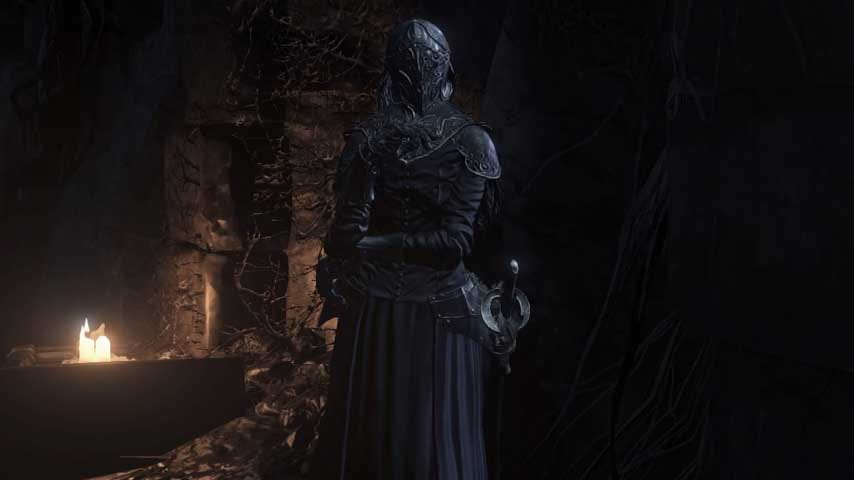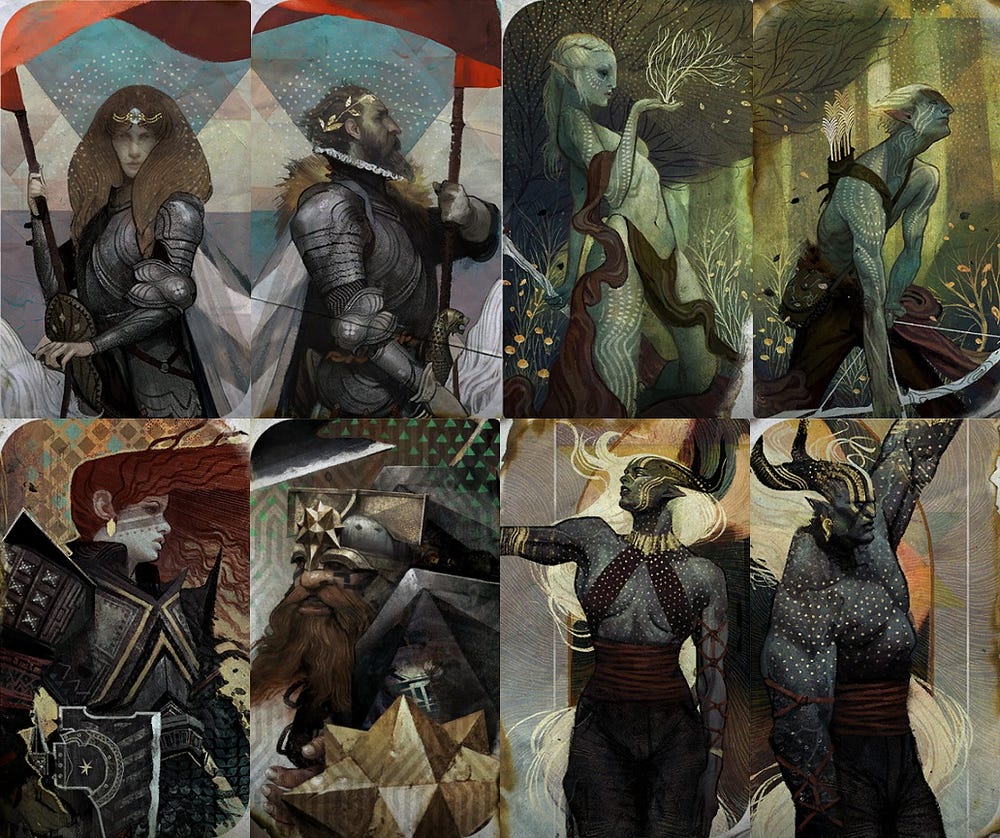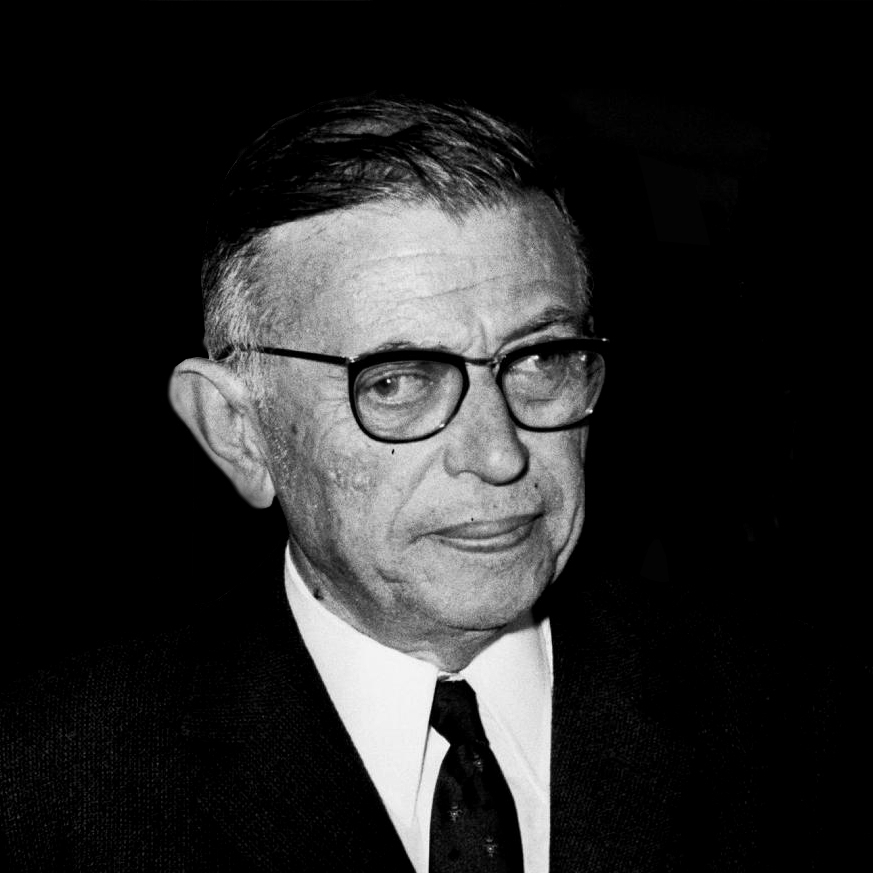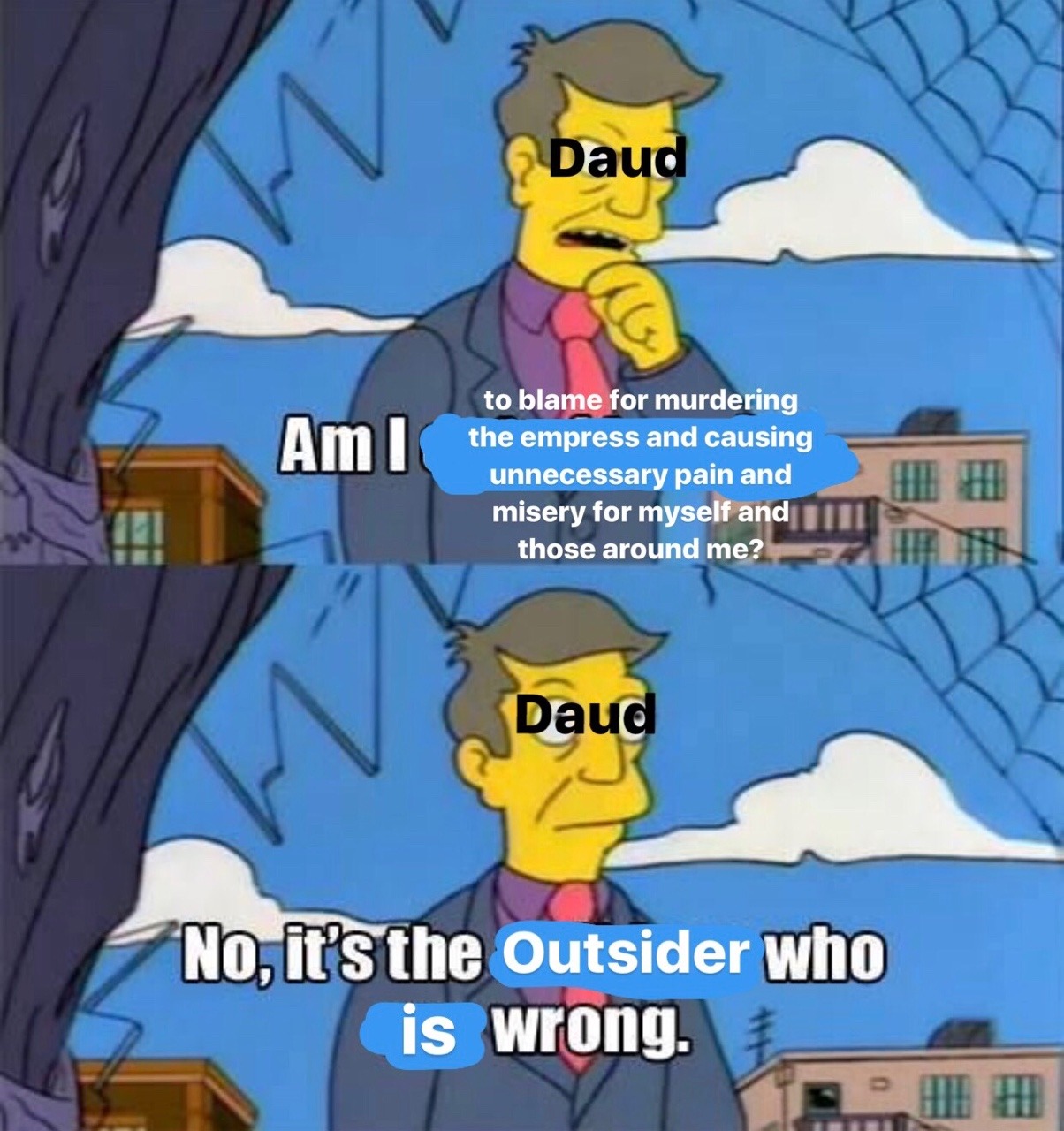Jean-Paul Sartre defines
consciousness as nothingness.[i]
This is fundamental to his framework of human agency as resting on, or erupting
from a metaphysics of absolute freedom. As nothingness, human consciousness cannot
be thought of as a substance or an object and can thus have no determinate
qualities that can then be regarded as the causes or source of one’s actions.
To think such is to be in mauvaise foi,
or bad faith[ii] –
which is as close to the concept of sin as one can find in Sartre’s
philosophical framework/theology.[iii]
In this sense, Sartre’s consciousness is entirely ‘for-itself’, wholly distinguished
from the objects of the world, the ‘in-itself’.
Likewise, for Sartre action is
structurally framed entirely as a modality of nihilation, of
negatité.
[iv]
The world exists as a set of circumstances external to the self. These conditions
are positive and substantive – meaning that they are something, they are there.
When consciousness acts it injects its own negativity into the world such that
it destroys the world as it was when consciousness found it. Action reaches out
for something that is not in the world – a nothingness – and negates the world
in which such a nothingness exists, bringing it into being.
[v]
As such, even acts we might consider to be wholly creative or productive prove,
at least on Sartre’s account, to be wholly negative.
As nothingness, Sartre’s account
seems – at least to me – unable to maintain the presence of a coherent notion
of individuality. Assuredly, Sartre’s philosophical outlook is wholly
individualistic, premised entirely on the nothingness of an individual
consciousness being fundamentally transcendent from the world, and the others
it finds within it. Though Sartre makes an attempt at justifying the primacy of
the individual, attempting to ground individuation in his picture of our phenomenological
experience, I find this wholly unsatisfying. To me, it seems that Sartre repeats
(almost entirely without criticism) a naturalised picture of individuation,
whereby we find a whole host of assumptions taken as given. The claim that we
experience the world as individuals is transposed into a metaphysical picture
whereby the world exists as a lump of stuff (a plenum of being) and in which we
are by our innate nature a transcendent nothingness that slips itself into the
world in order to change it.
I do not take issue with Sartre’s
notion of the self as nothingness per se,
but find that many of its implications seem to be at odds with his own
conclusions. If there is to be no positive content to consciousness, then there
seems to be no grounds for differentiation between individuals. As such, the
notion that an individual is – by their very nature – utterly distinct both
from the world and from each other appears to become untenable. Given that
Sartre’s account rests upon the absolute insolubility of individual choice, it seems
altogether impossible (if not exceptionally difficult) to defend him from the
charges of individualism. One is an absolute agent, totally and completely responsible
for one’s own choices, there is no real space within Sartre’s framework to
consider the conditions or contexts of one’s own action. These contexts, the facticity
of the world, exists only to be nihilated or falsely accused of determining our
actions – and thus we return to bad faith.
Bad faith is a multifaceted
concept for Sartre, illustrated with a broad array of examples.
[vi]
Underlying these is the notion that one is in bad faith whenever one abdicates
from their own freedom. As such, to refuse to recognise your absolute power to
choose is to be in bad faith. We can thereby consider bad faith as
consciousness turning its negativity upon itself – attempting to paradoxically
nullify its own possibilities.
[vii]
Bad faith is a form of cannibalism, in which consciousness attempts to falsely
limit its own potential, to narrow itself or bind itself to a fixed notion of
self.
[viii]
If we are to thus think of bad
faith – the closest thing to sin in Sartre’s eyes – as a form of reducing the
self in light of preconceived notions, then a tension arises with his own account
of individuation. Is it not perhaps a pertinent question to ask: isn’t the very
notion of individuation itself a form of bad faith?
There seems to me to be little
distinction between framing the individual as nothing and framing the
individual as everything. The result of such a move would be to rest on a
picture of fundamental unity, rather than fundamental division. If we follow
this line, does it not become plausible to say that Sartre’s distinction of the
individual and world rests entirely upon a pre-conceived notion of the
individual?
To collapse so radically the
distinction between the self and the world is to say that the self
is the world. Not that the self is part
of the world, but that self is everything. The notion of self as an isolated
entity becomes merely an ideological habit. Just as Sartre critiques a positive
notion of the self that sacrifices individual freedom in exchange for a clearly
demarcated and absolute individuality, could we not – in the very same spirit
of critique – turn back on Sartre’s configuration of the self as an isolated
void? There seems no reason to cling to this notion of individuality, no justification
to take this total solitude and distinction as the ground of one’s being (or,
more accurately, nothingness).
[ix]
We thus end up with a position
similar to that advocated by Alan Watts in his numerous musings (both textual
and aural) on spirituality, religion, and modern life. His position is perhaps
best summarised in his text
The Book,
a title which is avowedly tongue in cheek and appropriately highlights his self-styled
image as a self-professed trickster and philosophical entertainer. Within
The Book, Watts references the
Upanishads, lifting the quote: “That is the Self. That is the real. That art
thou!”
[x]
By this, Watts is specifically referring to collapsing, or at the very least
renegotiating, the distinction between self and other, between the individual
and the world. With this particular quote, Watts is elucidating a picture of
the world wherein there can be no absolute distinction between it and the
individual. The ‘that’ is everything, it is every element of existence.
Now, if we follow this picture
and expand the self concept to be completely inclusionary the result is that
Sartre’s framework comes to refute itself. As mentioned earlier, Sartre’s
account of action is fundamentally premised upon the negation of the world. The
self comes to nihilate the state of things as it finds it in order to actualise
something else – something that does not yet exist. Sartre is clear that in
order to do this, the individual must “posit the actual situation as
nothingness”,
[xi]
he must see the state of things as something that can be transcended or
overcome by one’s action. Though Sartre may not maintain this, we could read
this need to view the world as nothing as a parallel to the need to recognise
one’s own consciousness as nothingness. The structure of the world equally
becomes nothing. As such, action becomes a negation of the nothingness of the
world, the production of an actuality which can then in turn be negated. As we
have seen above, bad faith can – at least partially – be conceived in terms of
the attempt to negate one’s own nothingness. If we maintain this parallel between
consciousness and the world, it appears that human action itself becomes a form
of bad faith. The result is either to abandon bad faith or to abandon Sartre’s
account, and perhaps these two conclusions are inseparable.
Sartre may maintain that the
nothingness of the world is only thus through the positing activity of
consciousness – a point which is meant to establish that the world is only
nothing when consciousness acts on it. This in itself raises a further question
about the notion of being within Sartre, with how he fundamentally conceives of
the world as an actuality, rather than a negativity.
It seems to me that the abolition
of the self as a positive entity, an abolition that is made all the more
convincing in light of our phenomenological experience, should also prompt further
reflection on our notion of individuation. Sartre’s account certain succeeds in
the former,
[xii] but
fails to adequately justify the retention of an individuated self. It seems
that we are prompted to ask whether or not we need to abolish the self or
expand it? This in itself prompts the further question: are these notions
distinct? If so, what is the distinction?
Works Cited
Kirkpatrick, Kate, ‘Is Shame an Emotion?’, The Oxford Philosopher,
2017 <https://theoxfordphilosopher.com/category/theology/> [accessed 9
December 2017]
———, Sartre and Theology (London:
Bloomsbury Publishing PLC, 2017)
Sartre, Jean-Paul, Being and
Nothingness, trans. by Hazel E. Barnes (UK: Routledge, 2003)
Watts, Alan, The Book: On the Taboo
Against Knowing Who You Are (UK: Souvenir Press Ltd, 1966)
[i] Jean-Paul Sartre,
Being and
Nothingness, trans. by Hazel E. Barnes (UK: Routledge, 2003), chap. The
Origin of Negation.
[ii] Sartre, chap. Bad Faith.
[iii]
I chose the term ‘theology’ quite specifically here as, despite his avowed
atheism, Sartre’s language and approach are steeped in theological language and
concepts. This is noted by Kate Kirkpatrick in her work, see: Kate Kirkpatrick, ‘Is Shame an Emotion?’,
The Oxford Philosopher, 2017
<https://theoxfordphilosopher.com/category/theology/> [accessed 9
December 2017]; Kate Kirkpatrick,
Sartre and Theology (London:
Bloomsbury Publishing PLC, 2017).
[vi] Sartre, chap. Bad Faith.
[viii]
In particular, we see this in his dual example of the homosexual and the champion
of sincerity. Homophobic connotations aside (as difficult as that may be given
their prevalence in this example), Sartre’s broader point is that there is no
fixed self upon which we can pin our choices and behaviours. See: Sartre, pp. 63–67.
[x] Alan Watts,
The Book: On the Taboo
Against Knowing Who You Are (UK: Souvenir Press Ltd, 1966), p. 150.
[xii] One
interesting observation of this is the way in which in mirrors the abolition or
reorientation of the concept of self as notable across various mystical
traditions – regardless of their ‘religious affiliation’.




